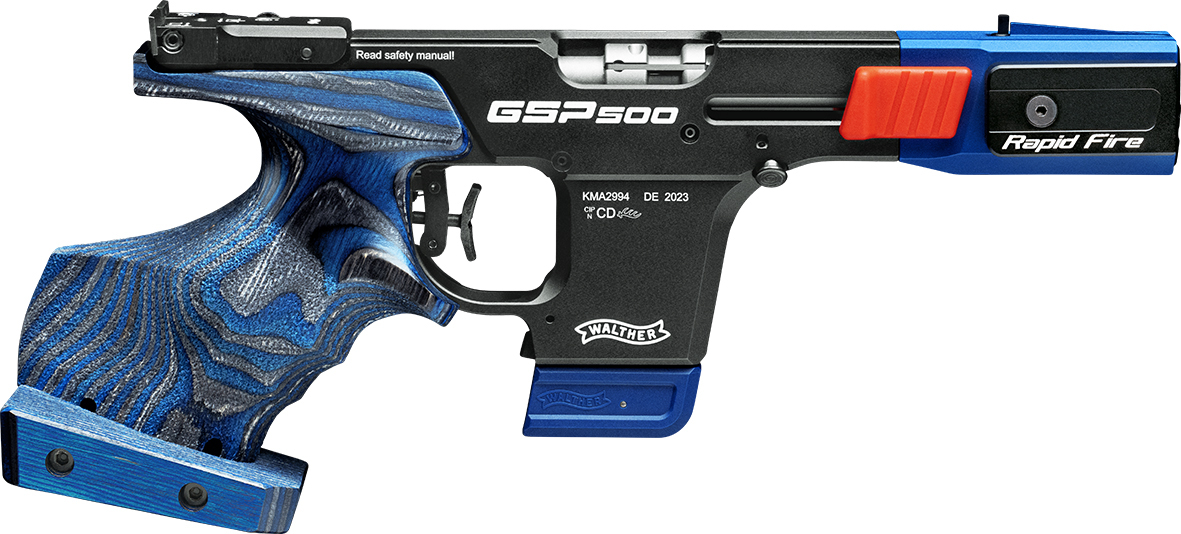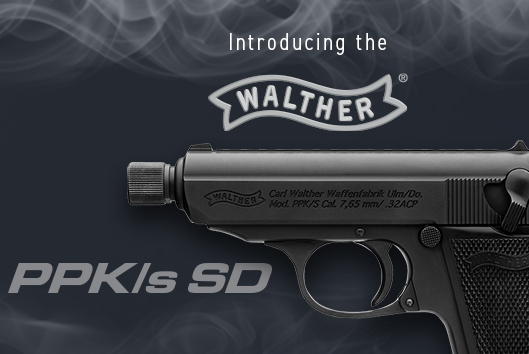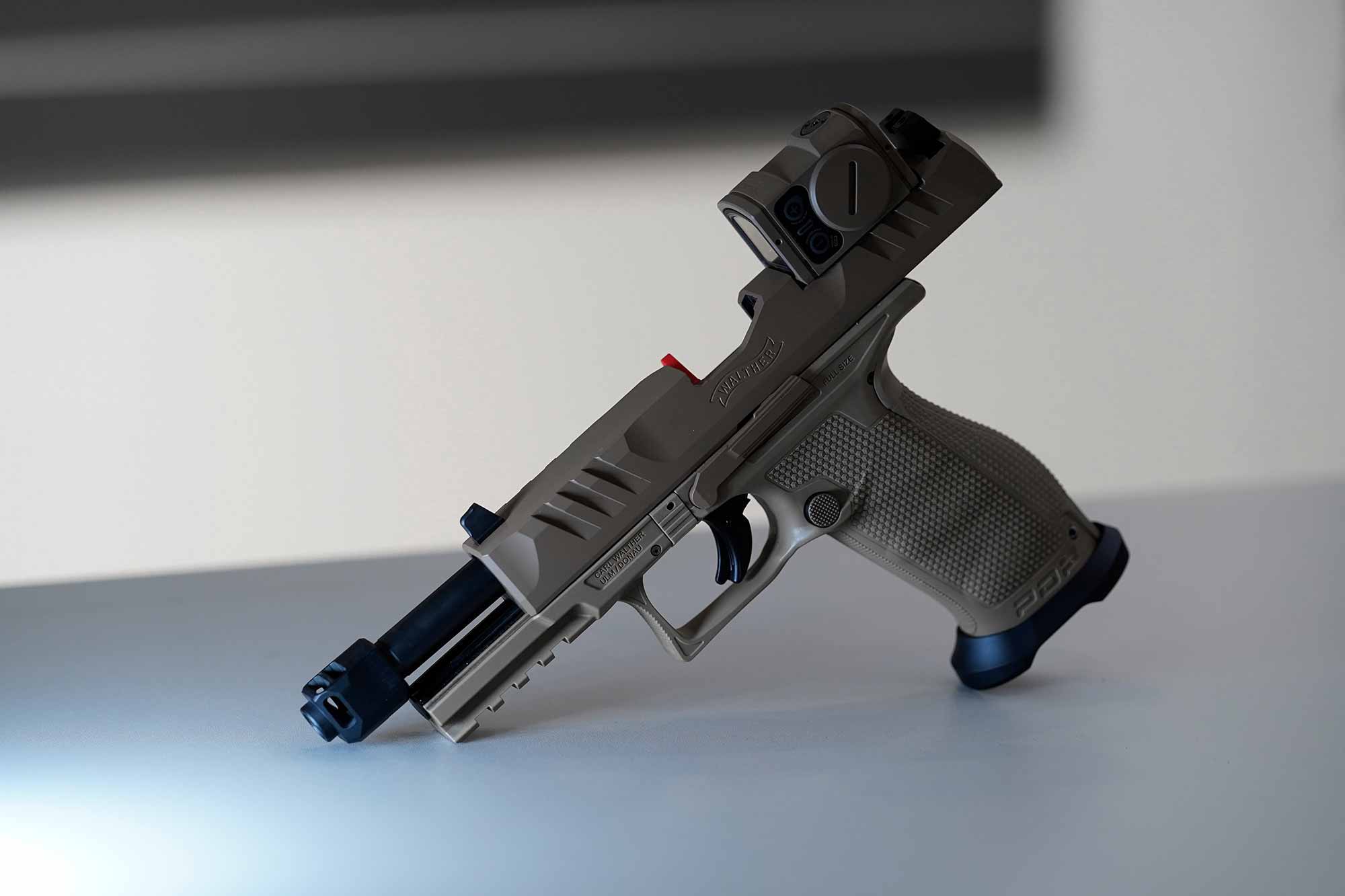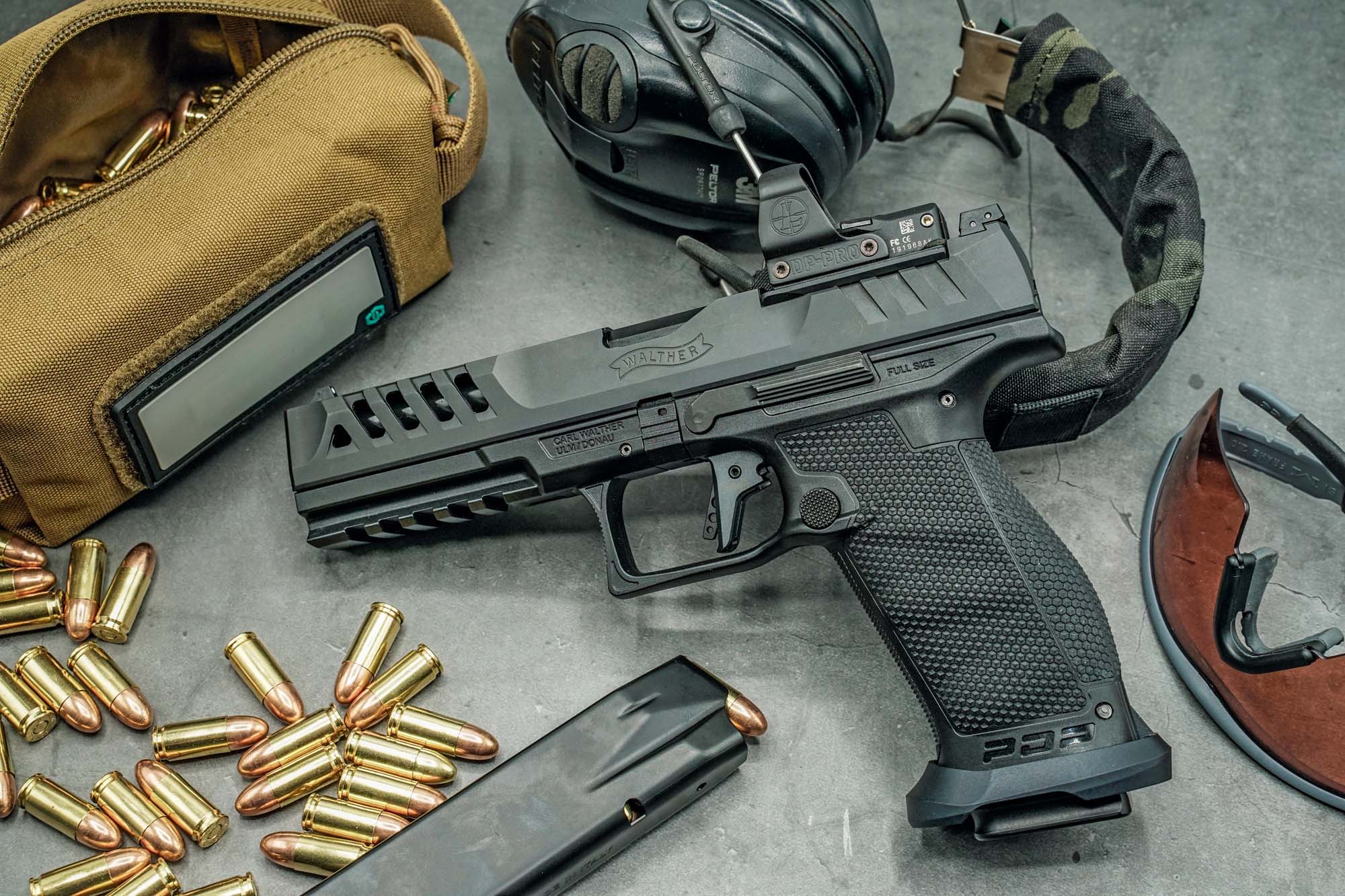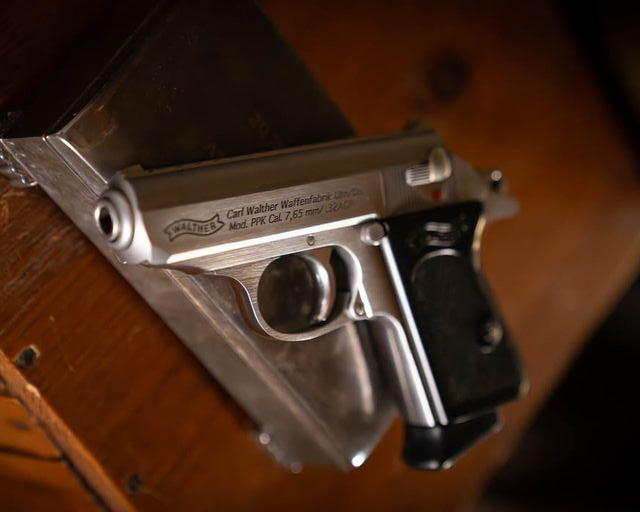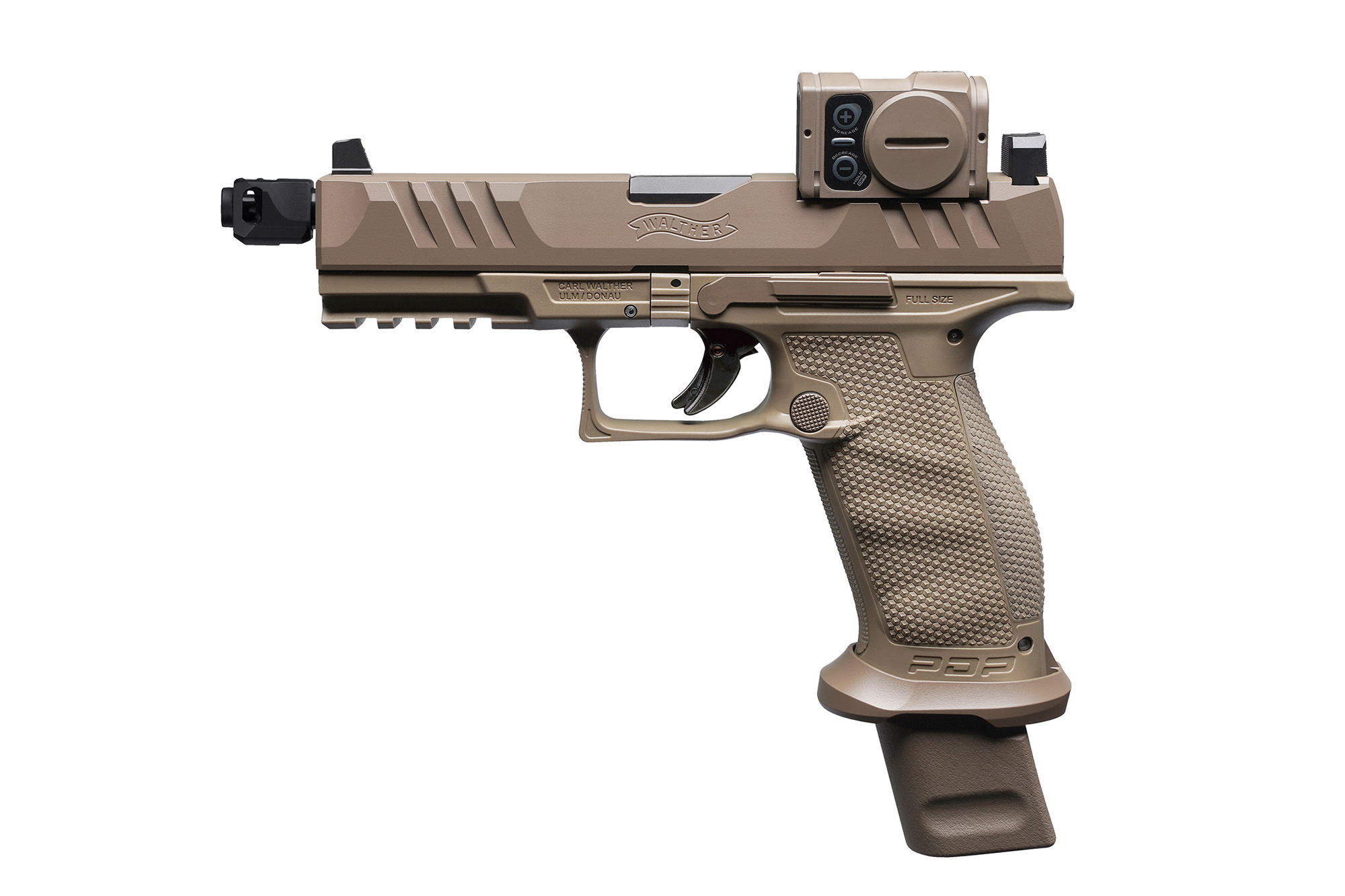Steel is currently experiencing a renaissance in gun design. After all the years in which light metal alloys and above all polymer were in vogue and were used in all possible and in some impossible places (for example, sights), designers are now evidently returning to the good properties that steel brings with it. It is durable and easy to shape and machine. It has a high density and strength, is heavy and, with good care or as a stainless version, is hardly affected by environmental influences. Psychologically, steel also conveys the image of being indestructible.
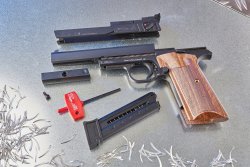
The German company Carl Walther has been building long guns since 1886, handguns since 1911 and sporting guns since 1925. The new trio of rimfire pistols is intended to tie in with this model history around the legendary Walther Olympia. The CSP acronym stands for "Classic Sports Pistol". The gallery of ancestors starting with the Walther model 1925, the company's first rimfire pistol, shows many successes. This also applies to other Walther models such as the Olympia from 1936, the Hämmerli-Olympia from 1952 and the Hämmerli 208s, but also to less successful examples such as the first Hämmerli X-Esse pistols from 1999. Even the new edition from Ulm X-Esse production after 2006, which was used by beginners and for dynamic disciplines such as rimfire-IPSC, could not fully score, although there was also a "Steel Frame" version. The slide, however, remained aluminum alloy.
Walther CEO Bernhard Knöbel had this to say about the three new CSP models: "We wanted to change some of the manufacturing processes for the X-Esse anyway, but then decided on a complete re-engineering. Now the grip and slide are milled from solid forged steel. We protected the surfaces with Tenifer and QPQ treatments in the same way as our modern Walther service rifles." This now looks similarly evenly saturated and matte as with the Olympias, which sported a deep black bluing at the time. However, the carefully modernised design of the three versions available for market launch in 2023 is clearly recognisable.
The basic conditions for the development of the Walther CSP models? Since the historical model and its successors were designed as sport pistols, the CSPs also adhered to the external dimensions usual there. Other shooting sports associations worldwide that use CSP pistols have also joined the rules and regulations of the International Shooting Sports Federation (ISSF). This is helpful and saves money if someone wants to compete in several associations or disciplines because the same pistol can be used several times.
What do the three new Walther CSP variants have in common?
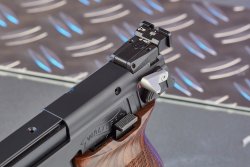
Common to all three CSP variants available so far is a barrel of 150 mm in length, firmly connected to the frame section and angular on the outside on the sides and on the top surface. The forged slide weighs 186 g. If you remove the magazine, swing the trigger guard down and hold it there for a moment, the slide can be lifted off backwards and upwards. Then you could move it forward and detach it from the frame. Correct, this method has been a worldwide Walther hallmark since the PPK of 1931, but in fact this trigger guard disassembly was also used on the 1925 model and of course on the original Olympia. The slide spring, which only works on the left side of the gun, is also a classic from Olympia times. It remains in its recess and would only be changed in case of repair.
Model variant 1: Walther CSP Classic – The beginner's model
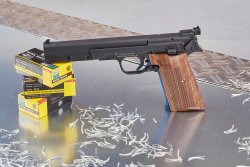
The basic model is called the CSP Classic and is the pistol in the new model series that is closest to the Olympia. The fact that the Classic has the typical angular walnut grip panels of a Colt 1911 is therefore just as little a coincidence as the steep grip angle. The position of the magazine release on the left side of the frame behind the trigger guard is also reminiscent of the pistol model popular in the USA and worldwide. The magazine is a modern plastic box, tightly sprung, with slightly protruding loading assist buttons and markings every two cartridges up to the full 10-round capacity. On the Classic, only the length of first stage trigger travel and the point of sear engagement can be adjusted. Trigger weight was pre-adjusted at the factory to the 1,000 grams customary for most disciplines. For the rear sight, a simple model from LPA is dovetailed at the rear end of the slide; the front sight is a fixed component of the barrel and therefore can't be changed.
Model variant 2: Walther CSP Dynamic – For action disciplines
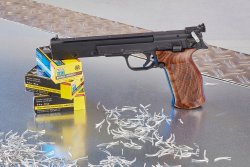
Designed more for two-handed shooting in action disciplines, IPSC or fast target series, the CSP-Dynamic offers a little more comfort than the Classic. We will only go into the differences here: the grip scales, also made of walnut and oiled, form a curved section at the back of the grip that fits perfectly in medium-sized palms. The LPA micrometer rear sight is elevation- and windage-adjustable; in front a so-called rototable front sight offers the shooter different widths (4.7/4.4/3.8 mm). Two 1.0 mm higher front sight variants are available as accessories at extra cost, one of them also with narrower options (4.0/3.6/3.2 mm). The rear sight and front sight of the Dynamic also have white dots for faster target acquisition.
With this model and also with the CSP Expert, a match trigger has been fitted, which can of course also be adjusted in first stage travel and weight. In addition, take up and sear engagement can be changed here. This allows for higher trigger values of up to 1,360 grams. The trigger pull weight can be changed via a hexagon socket screw in the trigger guard. If the shooter wants a heavier take up, the grip plates must first be removed. On the Dynamic, a second lever, offset upwards by 45 degrees, is screwed onto the flat safety. Its wider surface can be pushed up with the top of the right thumb to lock and down with the bottom to unlock, because it is often needed in action shooting. The model is primarily designed for right-handed shooters.
Model variant 3: Walther CSP Expert – For one-handed disciplines
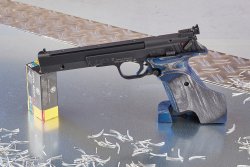
The CSP, already factory equipped with an anatomical grip and adjustable palm rest, is aimed at shooters who practice disciplines to be contested one-handed. Shooters can choose between a grip made of blue-coloured laminated wood or Caucasian walnut. By the way, you can buy a lot more for all CSPs: for example, plastic hi-grips as a right-hand version in S and L, a right/left hi-grip in black or a grip in carbon design. A front weight to adjust the balance and also to reduce the muzzle flip when firing does not have to be purchased with the Walther CSP Expert: a 100-g steel weight for the dovetail under the barrel is included. The Expert trigger is the same Match Trigger as on the Dynamic; the sights as well, only in deep black and without white dots. An aluminium prismatic pica rail for screwing onto the barrels of the Dynamic and Expert does allow a red dot sight to be mounted – b t for our freehand shooting test, a special rail from Recknagel was used with a Burris Fastfire 3-Red Dot Sight.
All technical specs and prices of the three new Walther CSP models: CSP Classic, CSP Dynamic and CSP Expert
| Model: | Walther CSP Classic |
| Price: | 1,299 euro |
| Caliber: | .22 LR |
| Capacity: | 10 + 1 rounds |
| Dimensions (LxWxH): | 235x125x50 mm |
| Barrel Length: | 150 mm |
| Sight Radius: | 215 mm |
| Rear Sight Notch: | 3.0 mm |
| Front Sight Width: | 2.0 mm |
| Trigger Pull Weight: | 1,000 g |
| Weight: | 840 g |
Features: steel frame, steel slide. Walnut 1911-style grips. LPA rear sight, fixed front sight. Trigger not adjustable. With two magazines and case. | |
Model: | Walther CSP Dynamic |
| Price: | 1,399 euro |
| Caliber: | .22 LR |
| Capacity: | 10 + 1 rounds |
| Dimensions (LxWxH): | 235x125x40.5 mm |
| Barrel Length: | 150 mm |
| Sight Radius: | 215 mm |
| Rear Sight Notch: | 3.0 mm |
| Front Sight Width: | Rotatable |
| Trigger Pull Weight: | 1,000 - 1,360 g |
| Weight: | 880 g |
Features: micrometer rear sight and rotatable front sight, 45-degree safety, walnut grips, match trigger, 11 mm rail, 2 magazines, case. | |
| Model: | Walther CSP Expert |
| Price: | 1,499 euro |
| Caliber: | .22 LR |
| Capacity: | 10 + 1 rounds |
| Dimensions (LxWxH): | 245x145x50 mm |
| Barrel Length: | 150 mm |
| Sight Radius: | 215 mm |
| Rear Sight Notch: | 3.0 mm |
| Front Sight Width: | Rotatable |
| Trigger Pull Weight: | 1,000 - 1,360 g |
| Weight: | 950 g |
| Features: steel frame and
slide, anatomical grip (plywood or walnut), micrometer rear sight, rototable
front sight, match trigger, 2 magazines, front weight, case. | |
Practical test: with the Walther CSP models on the shooting range – Which ammunition performs best? Lapua, Eley or RWS?
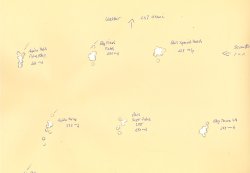
For the accuracy test, our testers chose the CSP Classic, since all three models were technically identical except for the equipment. An existing adapter for a Hämmerli X-Esse allowed comfortable clamping in the Ransom Rest shooting machine.
The results achieved over a shooting distance of 25 metres were impressive. Even the HV load (not recommended by Walther) (here from Aguila) remained under 40 millimetres.
The best value, however, was achieved by the Lapua Midas with 17 mm, i.e. clearly within the inner ten of the pistol target (25 mm). The RWS Special Match was 29 mm. Moreover, the groups were all round and it could not be determined that any make was unsuitable.
The new Walter CSP models in competitive comparison
The three CSP models available so far offer a solution for every purpose of sport shooting. Of course, anyone can also shoot informally, just for fun, without wanting to become a champion. Sure, this is cheaper with other makes than spending at least 1,300 euro for a Walther CSP Classic. But the accuracy, the feel and the flair of the brand clearly speak for the Walther CSP models.
But actually, the sporting aspect dominates – and there you can certainly compete for a long time with a Walther CSP Expert. At some point later, you might need a top model with better sights, an an even more precise trigger and a differently angled grip. But a Walther GSP 500, a Pardini or Feinwerkbau are now in the price range above 3,000 euros. For that, there would already be two Walther CSPs, and that might make you think about the current CSP range and its qualities when you are about to make a purchase decision.
Here you will find more information about the CSP models and other sport pistols from Carl Walther.
The accuracy test was conducted by Robert Riegel from the VISIER editorial team.



